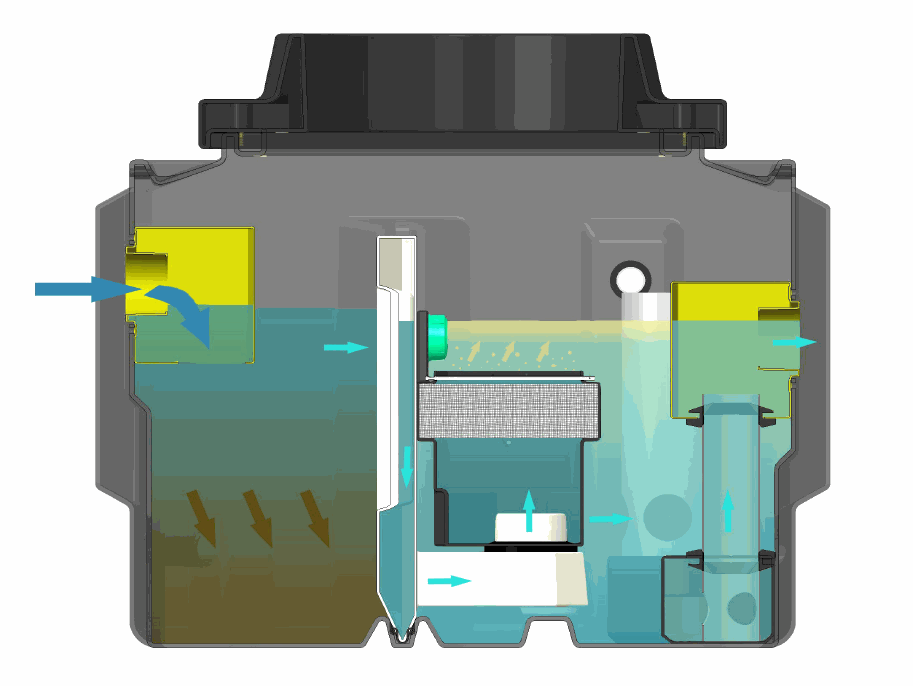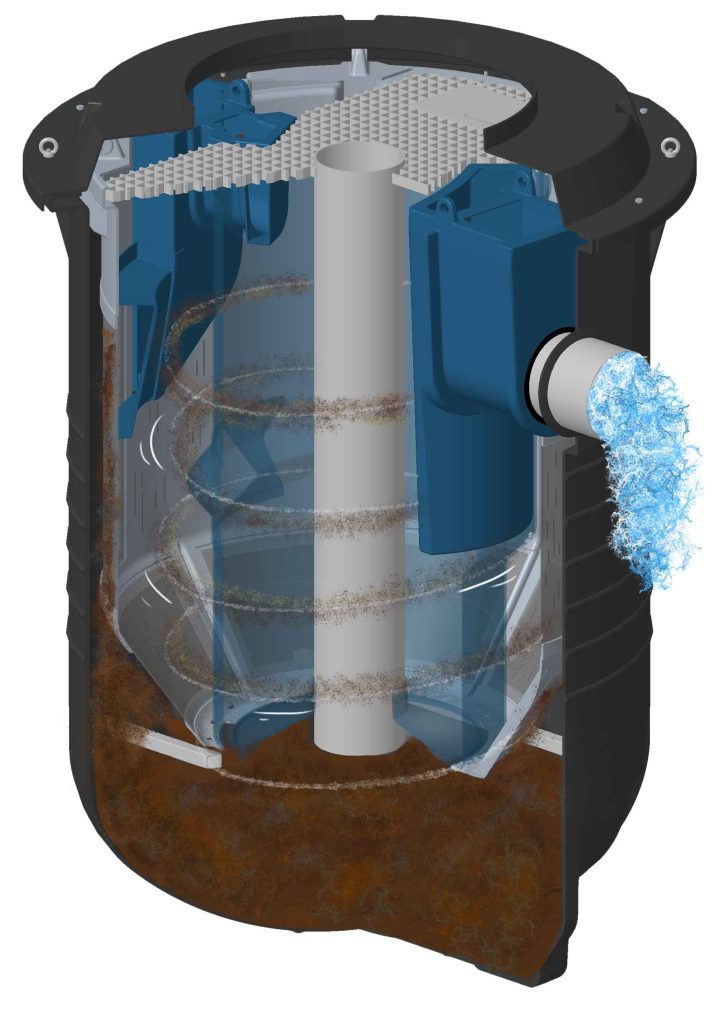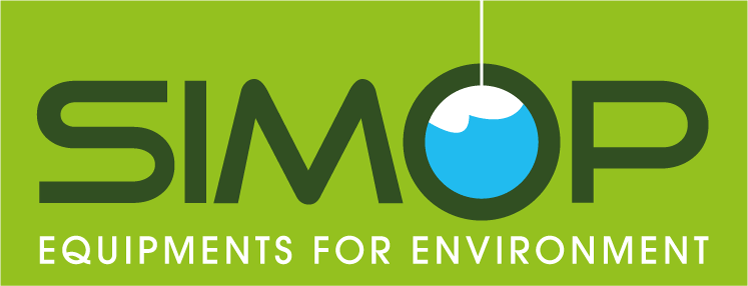Run-off water in ports and airports poses specific environmental challenges due to the pollutants present on site, such as :
- Hydrocarbons
- Oils
- Tires
- Heavy metals
- Chemicals (de-icers, detergents)
- Miscellaneous waste
Managers of these infrastructures must provide adequate equipment to treat this water before it is released into the environment. Here is an overview of the main runoff treatment equipment found in these contexts, including hydrocarbon separators and Trithon hydrodynamic separators.

Oil Separators for Ports and Airports

What is a hydrocarbon separator?
A hydrocarbon separator is a device designed to remove hydrocarbons from run-off water at ports and airports. These hydrocarbons can come from fuel, oil or chemical leaks, common in high-traffic areas.
Operation
The hydrocarbon separator operates on the principle of the difference in density between water and hydrocarbons. Run-off water is introduced into a chamber where the lighter hydrocarbons float to the surface and are separated from the water. The treated water can then be discharged into the drainage system or a retention basin.
Obligations and regulations
In many countries, the installation of oil separators is mandatory in infrastructures such as ports and airports, due to the environmental risks associated with oil pollution. Standards may vary, but compliance with local regulations is crucial to avoid penalties and protect the environment.
Trithon Hydrodynamic Separator for Ports and Airports

What is a Trithon hydrodynamic separator?
The Trithon Hydrodynamic Separator is a runoff treatment device that uses centrifugal force and selective walls to separate sediment and suspended pollutants from water in ports and airports.
Operation
Run-off water enters the separator and is set in rotation, creating centrifugal force. Solid particles and suspended pollutants are pushed outwards and deposited in a settling chamber. Clean water is discharged through the center of the unit.
Benefits
This type of separator is one of the most efficient solutions on the market, capable of effectively removing a very large number of pollutants, both solid and liquid (density <0.93). It is also compact and low-maintenance, making it suitable for port and airport environments.
Conclusion
For port and airport managers, the choice of runoff treatment equipment must be guided by the specific characteristics of the site and local regulatory requirements. Oil separators and Trithon hydrodynamic separator a are proven solutions which, when correctly sized and installed, contribute to environmental protection and regulatory compliance. It is advisable to consult water management experts and carry out a specific study to determine the most suitable solutions for each situation at ports and airports.
By installing this equipment, ports and airports can effectively treat run-off water, reduce their environmental impact and comply with current regulations, ensuring a safer, cleaner environment for all.




![CE 5 mg/l hydrocarbon separators with V300 sludge trap without closure kit 7 [4809] CE 5 mg/l hydrocarbon separators with V300 sludge trap without closure kit - Main image](https://simop.com/wp-content/uploads/2024/12/4809-ce-5-mg-l-hydrocarbon-separators-with-v300-sludge-trap-without-closure-kit-main-image-800x800-optimized.png)
![CE ACIER 5 mg/l hydrocarbon separators with V300 sludge trap and circular primers 8 [4808] CE ACIER 5 mg/l hydrocarbon separators with V300 sludge trap and circular primers - Main image](https://simop.com/wp-content/uploads/2024/12/4808-ce-acier-5-mg-l-hydrocarbon-separators-with-v300-sludge-trap-and-circular-primers-main-image-800x800-optimized.png)
![CE polyester 5mg/L hydrocarbon separator, 35 to 200 L/s, V100 sludge trap 9 [6658] CE polyester 5mg/L hydrocarbon separator, 35 to 200 L/s, V100 sludge trap - Main image](https://simop.com/wp-content/uploads/2024/12/6658-ce-polyester-5mg-l-hydrocarbon-separator-35-to-200-l-s-v100-sludge-trap-main-image-800x800-optimized.png)
![CE polyester 5mg/L hydrocarbon separator, 35 to 50 L/s, with bypass 10 [6659] CE polyester 5mg/L hydrocarbon separator, 35 to 50 L/s, with bypass - Main image](https://simop.com/wp-content/uploads/2024/12/6659-ce-polyester-5mg-l-hydrocarbon-separator-35-to-50-l-s-with-bypass-main-image-800x800-optimized.png)
![CE polyester hydrocarbon separator, flow rate over 50 L/s, made to measure 11 [6668] CE polyester hydrocarbon separator, flow rate over 50 L/s, made to measure - Main image](https://simop.com/wp-content/uploads/2024/12/6668-ce-polyester-hydrocarbon-separator-flow-rate-over-50-l-s-made-to-measure-main-image-800x800-optimized.png)
![CE polyester hydrocarbon separator, flow rate greater than 50 L/s, with by-pass, custom-made 12 [6669] CE polyester hydrocarbon separator, flow rate greater than 50 L/s, with by-pass, custom-made - Main image](https://simop.com/wp-content/uploads/2024/12/6669-ce-polyester-hydrocarbon-separator-flow-rate-greater-than-50-l-s-with-by-pass-custom-made-main-image-800x800-optimized.png)